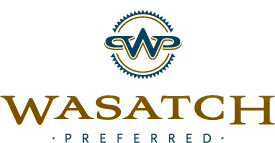Some of the riskiest locations for roadway collisions are work zones, as they often result in changes in traffic patterns and right of way, along with workers present and large commercial vehicles on the scene.
Work zones are designed to improve the safety of workers who are enhancing or repairing roads, freeways, bridges, sewage and other infrastructure by separating construction and maintenance activities from traffic. The crews do that by providing a safe route for motorists, pedestrians and bicyclists and a safe area for the workers on the scene.
That stew of activity and unpredictability sadly results in carnage and death and large trucks account for 33% of all fatal accidents in work zones, despite the fact that they account for just 5% of the vehicles on the road.
And traffic deaths in work zones are increasing, with 842 people dying in 2019, up from 757 in 2018. Commercial vehicles accounted for 250 of those deaths.
With liability risk in mind, it’s important that you take the extra effort to cover driving in work zones during your driver safety training.
At the first sign of road construction, your drivers should slow down. Keep in mind that stopping takes space and time. Depending how fast a truck is traveling, it can take more than the length of a football field to stop, even in the best conditions (good tires and dry pavement). At 65 mph, the stop will take more than 7 seconds to complete.
Stopping distances can be even greater if:
- It is raining or snowing,
- Tires or brakes are worn,
- There is dirt or gravel on the road,
- The truck is carrying a heavy load,
- The truck is carrying a liquid load (especially when the tank is not completely full), or
- The truck is traveling downhill.
The most common types of accident
Let’s look at the most common commercial vehicle work-zone accident scenarios, and why they happen:
Rear-end collisions — These are most common in work zones on freeways, interstates and two-lane highways.
Why they happen: The driver was not aware or prepared for stopped or slowed traffic ahead of them.
Head-on collisions — These are most likely to happen in work zones on two-lane highways.
Why they happen:
- The driver crosses the centerline at night.
- The driver swerves to avoid objects and into oncoming traffic.
Right-angle collisions — These are most likely to happen in work zones on non-freeway multi-lane roads.
Why they happen: The driver pulls out of or turns left into a workspace, intersection or driveway without enough of a gap in traffic.
Sideswipe collisions — These incidents usually occur on freeways, interstates and other multi-lane roadways.
Why they happen: The driver fails to check for vehicles in their blind spots while trying to merge out of a closing lane or into an open one.
Truck collisions with objects or workers — These especially dangerous accidents usually happen in work zones on non-freeway multi-lane roads.
Why they happen: Typically, the driver is traveling too fast to negotiate the work zone.
The American Road Transportation and Builders Association has these recommendations for drivers entering or driving inside a work zone:
- Pay attention to work zone signs.
- Leave enough space between you and the motorist in front of you.
- Be prepared to stop or slow unexpectedly.
- Expect to stop when you see a “Flagger Ahead” sign.
- If stopped or slowed in a traffic queue, consider turning on your flashers to warn traffic coming up behind you.
- Watch for traffic and workers going into or out of the work zone.
- Get into the open lane as soon as possible at lane closures.
- Be especially aware of motorists racing to get ahead of you or trying to turn in front of you at the last second.
- Use alternative routes to avoid work zones whenever feasible.
